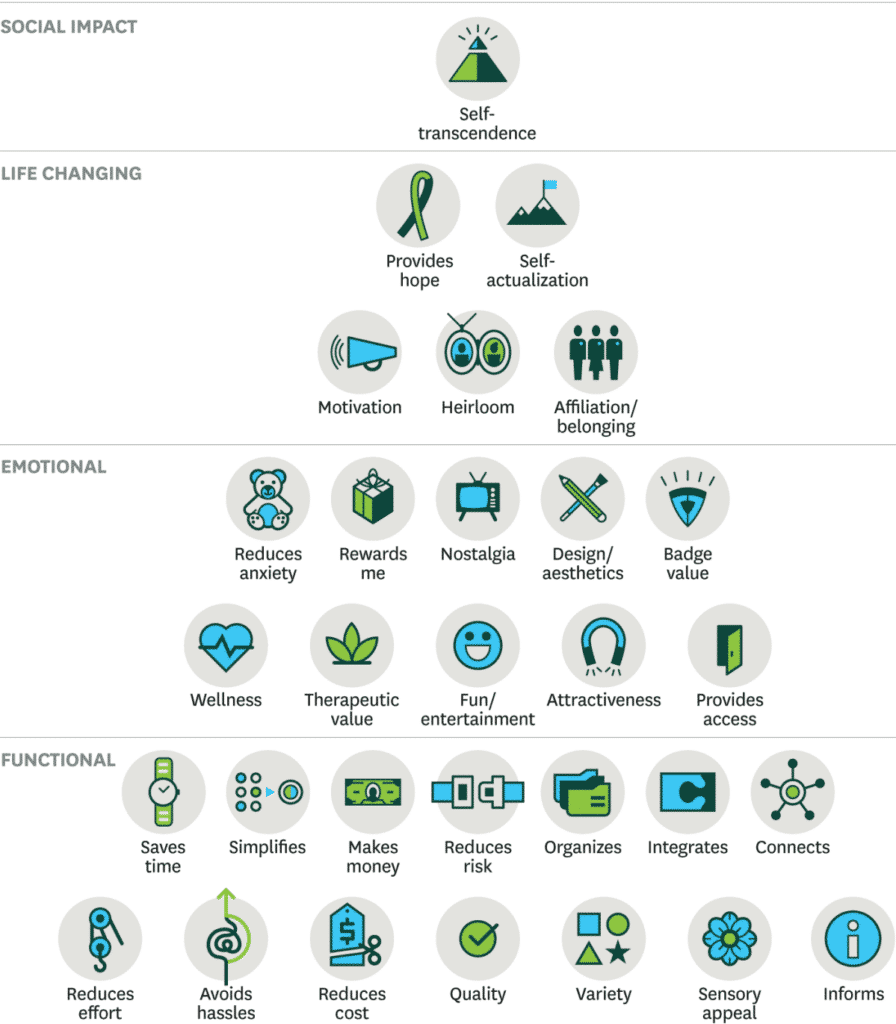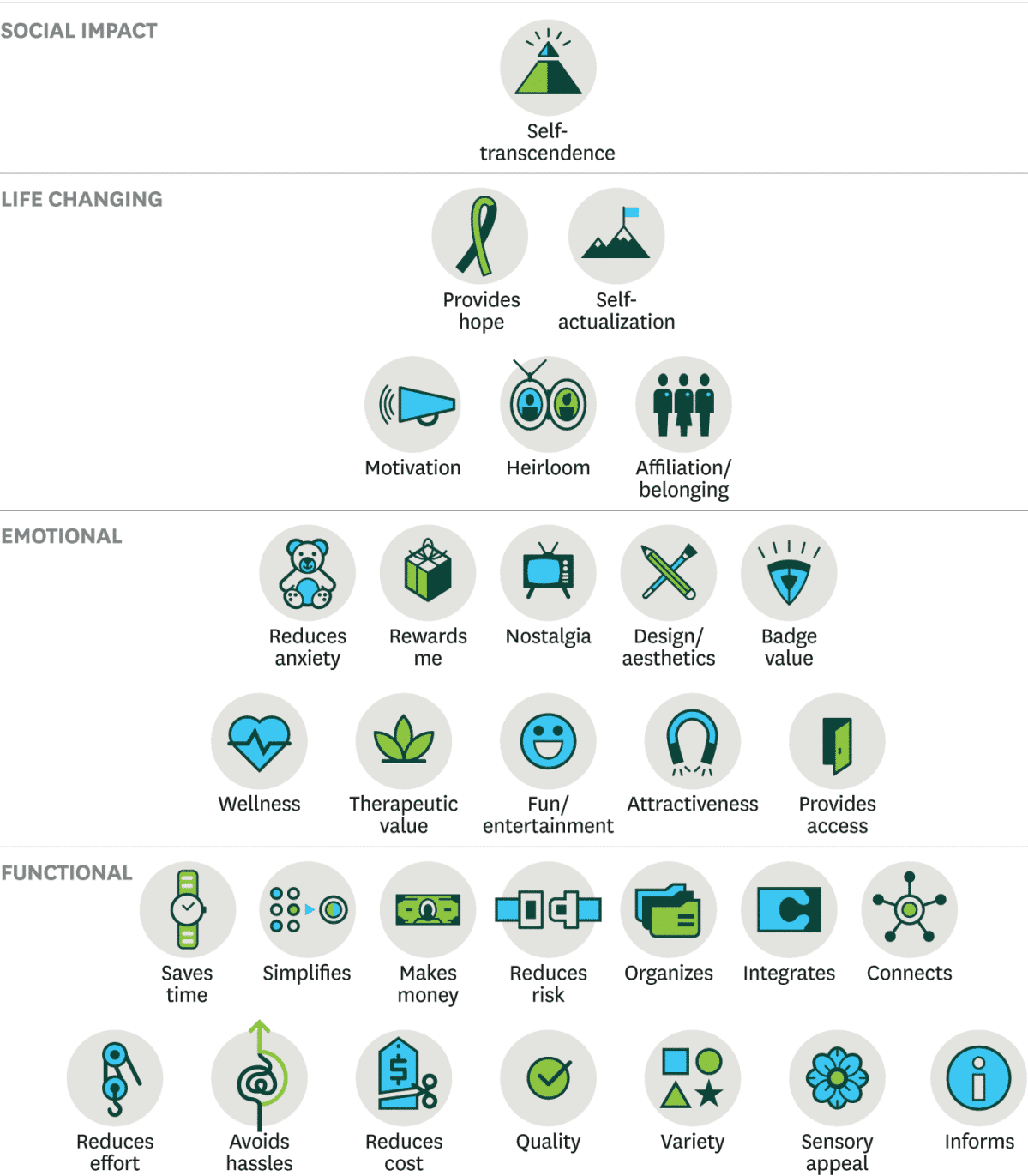Table of Contents
The Connection: Net Promoter Score (NPS) – Value – Revenue
Key points:
- Using Market Research and NPS to reveal and evaluate the voice of customers. Voice of consumers can allow your business to set a clear map for secure and sustainable growth
- Every customer makes decisions based on the value/benefit they will receive
- By understanding, elements of value businesses can better prioritize, allocate resources, and make their offerings more attractive
How understanding the elements of value can revolutionize your business
The relationship between psychology and business, via the medium of customer decisions, is irrefutable. Every company relies on customers choosing them for one reason or another. Thus understanding the varied factors contained in that moment of choice are vital to sustained success. The simplified general understanding of a customer’s decision making process suggests that it comes down to Price vs. Benefits and over time that has always proven to be true. Benefits are the domain of research and development. Areas which, while also being very advanced, generally lack the scientific certainty and quantifiable figures needed to predict decision-making with complete confidence.
Taking an analytical-psychological approach
Yet, at the end of it all, the process is in essence a psychological one occurring in the minds of humans. Therefore, with a deeper investigation of the underlying psychology, businesses could reduce the risk of a head-to-head price war with competitors. By concentrating instead on revealing and delivering the benefits that their potential customers want. In this vein, a recent article in the Harvard Business Review by Eric Almquist, John Senior and Nicolas Bloch explored the concept of universal building blocks of value and how they can be used to benefit your business. The concept could prove revolutionary for any business, no matter its size. Not to mention it allows one to create a solid vision of what a company should focus on delivering. Both for its individual products and its own overall offering.
The theory builds on the widely accepted and academically reviewed “hierarchy of needs” developed by Abraham Maslow. With the core concept being that everyone’s actions focuses on the achievement of a set of basic desires. Maslow allowed the field of psychology to better understand complex emotional issues. Coupled with what drove people to act in certain ways. The applications of this for business and marketing are clear but there was a need to develop a behavioural model with terms more focused on these areas. To do this the authors developed a hierarchy of “Elements of Value” which describe the benefits a consumer derives from a product or service.

Fig.1: The Elements of Value Pyramid. Bain&Company Inc, 2015, “The Elements of Value”. Taken from: The Elements of Value, E.Almquist, J. Senior, N. Bloch
A research into what decides customer choice
To arrive at the 30 elements which form the pyramid the authors drew on their own decades of experience and observations at the highest levels of consumer research. As well as a wealth of quantitative and qualitative studies on the subject. By probing consumers to expand upon their initial “like” or “dislike” of a product or service. These studies aim to get down to the fundamental factors in a consumer’s decision making. Though in the form of a pyramid the authors insist that, like Maslow’s pyramid, not every condition of previous steps is necessary to progress to the next. Indeed, many variations of elements can be found in products. One of the key advantages of the model is in helping to understand how businesses can add to their core value offering in an organic way.
To test the hypothesis of whether these building blocks of value actually affected business performance. The authors led a huge study of 10,000 participants, each of which were asked to give their views on one out of approximately 50 US companies. With which they had recently done business with. The respondents ranked their perception of how the company delivered on each element of value on a 0-10 scale. These results were then compared to a company’s Net Promoter Score (NPS) and their recent revenue growth. The conclusions reached by the authors through their extensive study adds empirical foundations to what may have seemed like common-sense beliefs. But the study goes even deeper in offering insights into how various companies achieve steady revenue and pathways to increase growth.
The advantages of understanding elements of value
The study showed that companies where at least 50% of consumers gave a high score (at least 8/10) in four or more elements of value (e.g. Apple, Samsung, Amazon) on average. They had three times the NPS of those with just one high score, and 20 times that of those with none. A positive correlation was also proved between revenue growth and excellent execution of elements of value; companies with four or more high scores had four times the recent revenue growth as others who had one or less. They might seem like intuitive conclusions. But the vast differences between high and low quality delivery of values are demonstrative in their scientific value for any firm looking for a confirmed methodology for decision making.
As an example, the study points out Amazon, which scored highly on eight elements of value, most of which are functional. They delivered a value with Amazon Prime that saves time and reduces cost. And then focused on adding elements like fun/entertainment through streaming media and secure cloud storage which reduces risk. By concentrating on improving its core offering and building sensibly around that they were able to bump their annual flat fee by 25% and still continue its strong customer growth.
How to get value working for your business
This is where understanding elements of value can really pay off for a company. When you realize what your customers are getting from your products or services you can focus on enhancing those experiences. Naturally there are various packages of elements which one would expect across different industries. You could expect cooking utensils to have quality and reduce effort. But consumers wouldn’t generally require them to provide fun/entertainment or to provide hope(?). By improving on the expected elements of value of your products and services consumers will derive higher benefits; increasing both loyalty and new customers with corresponding revenue security and growth.
Through targeted and effective Market Research you will be able to canvas segmented panels on the elements of value they expect and how you can provide them. You can combine with measuring your NPS score to evaluate customer opinions of your company. So you can discover how well you are performing and delivering elements of value in the eyes of your customers. By harnessing a knowledge of the elements of value you can increase your products’ worth to customers. In the hope to create a sustainable growth pathway for your business.
Interested in getting started with the NPS score? Have a look at our NPS software.
Reference:
Eric Almquist, John Senior, Nicolas Bloch (2016) “The Elements of Value”, Harvard Business Review, pp. 46–53.
-
Sophie Hedestad
-
Sophie Hedestad
- 5 min read
- .







 Copyright © 2025 Netigate AB, Drottninggatan 25, 111 51, Stockholm, Sverige
Copyright © 2025 Netigate AB, Drottninggatan 25, 111 51, Stockholm, Sverige